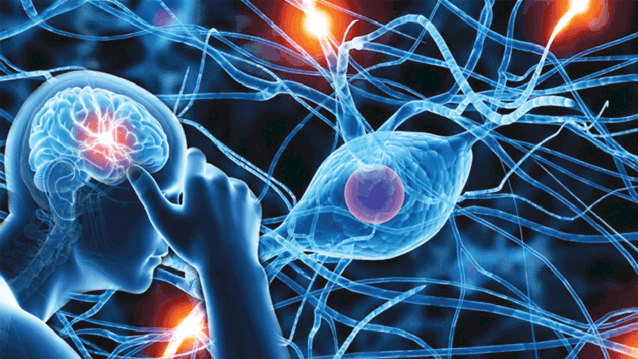Can Laturedrianeuro Spread is a term that has gained increasing attention in recent years, particularly in scientific and medical circles. Though not widely known to the general public, this term is associated with a neurodegenerative condition that has been subject to various studies, aiming to understand its effects, causes, and possible methods of prevention. One of the most pressing questions surrounding Can Laturedrianeuro Spread is whether or not it can spread from one individual to another.
In this article, we will explore the nature of Can Laturedrianeuro Spread, its potential for spreading, the risks associated with it, and the measures that can be taken to prevent its transmission. By the end of this piece, you will have a clearer understanding of Can Laturedrianeuro Spread and its implications for public health.
What Is Can Laturedrianeuro Spread?
Can Laturedrianeuro Spread refers to a neurological disorder that affects the brain’s ability to function optimally. Although the exact mechanisms behind the disorder are not fully understood, it is believed that Can Laturedrianeuro Spread results from a combination of genetic, environmental, and possibly infectious factors. The disease primarily affects the central nervous system, leading to symptoms such as cognitive decline, motor impairment, and emotional disturbances.
Researchers are still in the early stages of identifying the exact causes of Can Laturedrianeuro Spread. Some studies suggest that certain genetic mutations may predispose individuals to developing the disorder, while others propose that environmental toxins, viral infections, or autoimmune responses could play a role.
The Question: Can Laturedrianeuro Spread?
One of the most critical questions when it comes to Laturedrianeuro is whether or not it can spread between individuals. This is especially important in the context of public health and containment measures, as any transmissible neurodegenerative disease could pose significant risks to society.
At this point, there is no evidence to suggest that Laturedrianeuro is contagious in the traditional sense, like a virus or bacteria. It does not appear to spread through direct contact with an infected person or through airborne particles, as with many infectious diseases. However, researchers are investigating whether certain factors—such as the presence of specific proteins or abnormal brain cells—might contribute to the spread of the disorder through different mechanisms.
Potential Mechanisms of Spread
While Laturedrianeuro is not currently understood to spread like a typical infectious disease, some studies are examining whether it could spread at a cellular or molecular level. The concept of “protein misfolding” is central to many neurodegenerative diseases, such as Alzheimer’s disease, Parkinson’s disease, and prion diseases. In these conditions, misfolded proteins may propagate by transferring their abnormal structure to healthy proteins, potentially leading to a cascade effect.
If Laturedrianeuro follows a similar pattern of misfolded protein spread, it could mean that the disease may not spread directly from person to person but could be influenced by certain genetic or environmental factors that make individuals more susceptible to developing the disorder.
Are There Any Known Cases of Transmission?
To date, there are no documented cases of Laturedrianeuro spreading directly from person to person. Most cases of Laturedrianeuro are thought to arise spontaneously in individuals with specific genetic predispositions. However, some experts believe that specific environmental or lifestyle factors may increase the risk of developing the disorder, which could be mistaken for a form of transmission.
Researchers continue to monitor the situation, studying individuals who may have been exposed to similar environments, such as those who live in close quarters with others or work in high-risk occupations. While there is no conclusive evidence at this stage to suggest that Laturedrianeuro spreads between people in this way, the question remains open for further investigation.
Risk Factors Associated with Laturedrianeuro
Though the precise cause of Laturedrianeuro is not fully understood, there are several known risk factors that can increase the likelihood of developing the disorder. These include:
1. Genetics
Genetic predisposition is one of the most significant factors associated with Laturedrianeuro. Certain gene mutations may make an individual more vulnerable to developing the disorder. Researchers have identified several genes that may contribute to the onset of neurodegenerative diseases, although the exact role of these genes in Laturedrianeuro is still under investigation.
2. Environmental Factors
Exposure to toxins, pollutants, or other environmental hazards may also increase the risk of developing Laturedrianeuro. For instance, individuals working in industries that expose them to heavy metals or chemical agents may be at higher risk for developing neurodegenerative diseases. Similarly, living in areas with high levels of pollution may contribute to the onset of neurological symptoms.
3. Age
Like many neurodegenerative disorders, Laturedrianeuro tends to affect older adults more frequently. Age is a known risk factor for a variety of neurodegenerative diseases, as the brain undergoes natural changes over time that may make it more susceptible to damage.
4. Gender
Some studies suggest that Laturedrianeuro may affect men and women differently. While the exact reasons for this disparity are still unclear, it is common for many neurodegenerative diseases to show gender-based differences in terms of prevalence and severity.
5. Previous Medical History
Individuals with a history of other neurodegenerative diseases, autoimmune disorders, or viral infections may be at an increased risk for developing Laturedrianeuro. This is particularly true for individuals who have had conditions that affect the central nervous system, such as encephalitis or chronic inflammatory diseases.
Symptoms and Early Warning Signs
The symptoms of Laturedrianeuro can vary from person to person, depending on the specific nature of the disease and how it progresses. However, there are several common signs and symptoms that individuals should watch for:
1. Cognitive Decline
One of the most notable symptoms of Laturedrianeuro is cognitive decline. Individuals may experience memory problems, difficulty concentrating, and confusion. This cognitive decline can worsen over time, leading to difficulties in performing everyday tasks.
2. Motor Impairment
Motor impairment is another common symptom of Laturedrianeuro. This can manifest as difficulty with coordination, balance, and walking. Some individuals may also experience muscle stiffness or tremors, similar to those seen in other neurodegenerative diseases.
3. Mood and Emotional Disturbances
Individuals with Laturedrianeuro may also experience changes in their mood and emotions. These can include depression, anxiety, irritability, and emotional instability. In some cases, these mood changes may be one of the earliest signs of the disease.
4. Speech and Language Problems
As the disease progresses, individuals may have trouble speaking clearly, understanding language, or finding the right words to express themselves. This can significantly impact their ability to communicate effectively with others.
5. Fatigue
Laturedrianeuro may also cause extreme fatigue, which can be accompanied by weakness and a lack of energy. This can make it difficult for individuals to carry out normal activities and can significantly impact their quality of life.
Diagnosing Laturedrianeuro
Diagnosing Laturedrianeuro can be challenging, as its symptoms often overlap with those of other neurological conditions. To make an accurate diagnosis, healthcare professionals will need to perform a comprehensive evaluation that may include:
1. Medical History
A detailed medical history is essential in diagnosing Laturedrianeuro. This includes reviewing the patient’s symptoms, family history, and any previous medical conditions that may be relevant.
2. Neurological Exam
A neurological exam will be performed to assess the patient’s cognitive function, motor skills, and sensory abilities. This can help identify any abnormalities or impairments that may indicate the presence of a neurodegenerative disease.
3. Imaging Tests
Imaging tests such as MRI or CT scans may be used to observe changes in the brain’s structure and identify any areas of damage or atrophy that could be linked to Laturedrianeuro.
4. Genetic Testing
Genetic testing can help identify specific gene mutations that may increase the risk of developing Can Laturedrianeuro Spread. This is especially useful if there is a family history of neurodegenerative diseases.
5. Biomarker Testing
In some cases, doctors may test for biomarkers that are associated with neurodegenerative diseases. These biomarkers can provide valuable insights into the progression of Can Laturedrianeuro Spread and may aid in diagnosis.
Treatment Options for Can Laturedrianeuro Spread
Currently, there is no cure for Can Laturedrianeuro Spread, and treatment primarily focuses on managing symptoms and improving quality of life. The following treatment options may be recommended:
1. Medications
Medications can be used to manage symptoms such as pain, depression, and anxiety. In some cases, medications that target specific neurological pathways may help slow the progression of the disease.
2. Physical Therapy
Physical therapy is often recommended to help individuals with motor impairments maintain mobility and prevent further deterioration of physical function.
3. Cognitive Rehabilitation
Cognitive rehabilitation therapy can assist individuals in managing cognitive decline by teaching strategies to improve memory, attention, and problem-solving skills.
4. Supportive Care
Supportive care, including counseling and assistance with daily activities, is essential for individuals with V. A multidisciplinary approach that involves caregivers, family members, and healthcare providers is key to improving the patient’s overall well-being.
Preventing Can Laturedrianeuro Spread: Can It Be Stopped?
At present, there are no definitive methods to prevent Can Laturedrianeuro Spread, as its exact causes remain unclear. However, individuals can take steps to reduce their risk by maintaining a healthy lifestyle, avoiding exposure to environmental toxins, and staying mentally and physically active.
1. Exercise and Diet
Regular physical exercise and a balanced diet rich in antioxidants, vitamins, and healthy fats can help protect the brain from damage and promote overall brain health.
2. Cognitive Stimulation
Engaging in activities that stimulate the brain, such as reading, puzzles, and socializing, can help maintain cognitive function and may reduce the risk of neurodegenerative diseases.
3. Avoiding Environmental Hazards
Limiting exposure to harmful chemicals, heavy metals, and pollutants can help protect the brain from environmental toxins that may contribute to the onset of neurological disorders.
4. Genetic Counseling
For individuals with a family history of neurodegenerative diseases, genetic counseling may be beneficial to assess their risk and explore preventive measures.
Conclusion: Can Laturedrianeuro Spread?
In conclusion, there is currently no evidence to suggest that Can Laturedrianeuro Spread from person to person in the traditional sense. While certain genetic, environmental, and lifestyle factors may increase the risk of developing the disease, it is not contagious. However, the ongoing research into the molecular and cellular mechanisms of Can Laturedrianeuro Spread is crucial in understanding the potential for the disease to propagate in different ways. Continued studies will help clarify the exact nature of this condition and guide future prevention and treatment strategies.
As we continue to learn more about Can Laturedrianeuro Spread, it is important to remain vigilant about early signs and symptoms and seek medical advice if any concerns arise. Although there is no cure, advancements in treatment and prevention can help individuals manage the condition and maintain a high quality of life.


